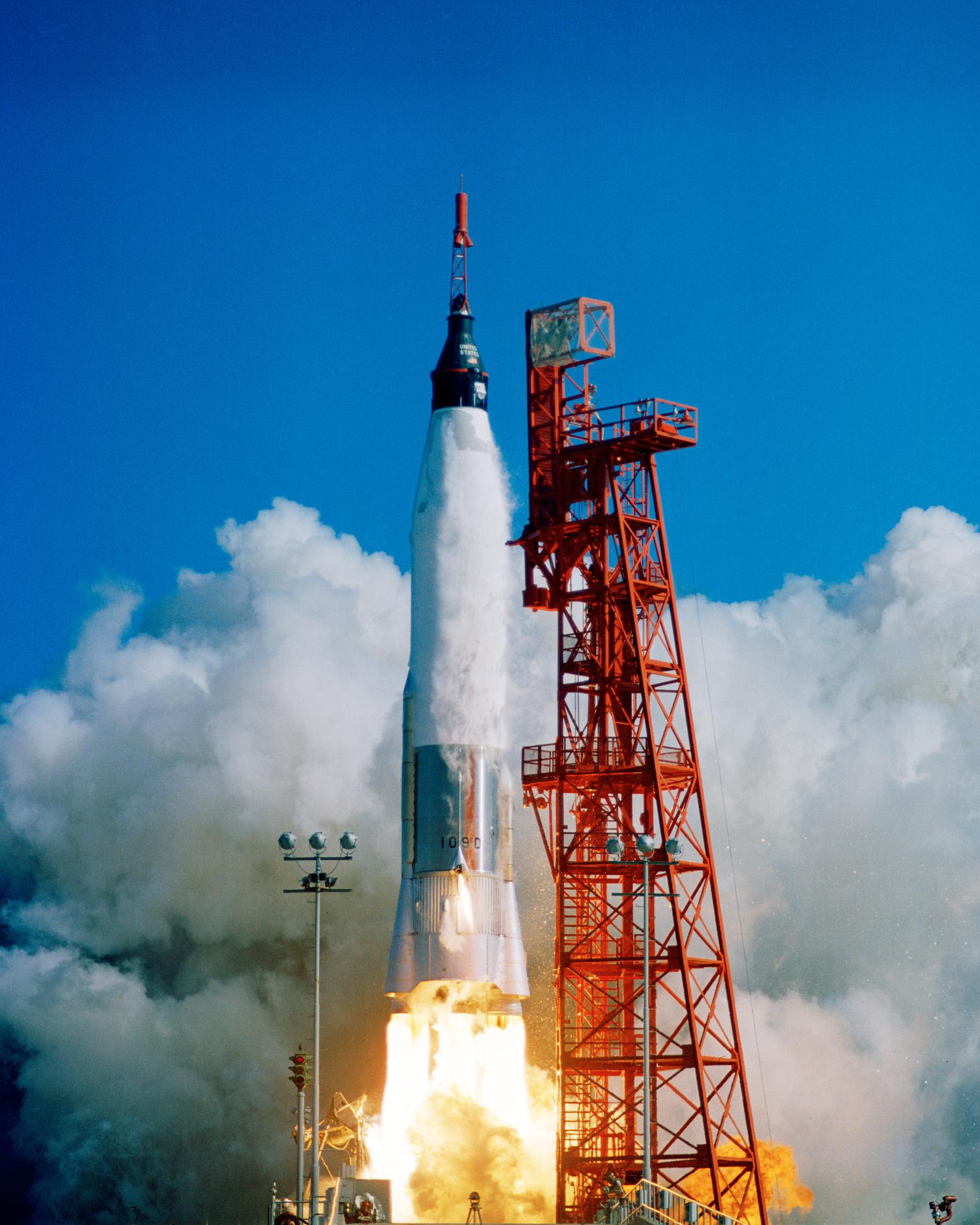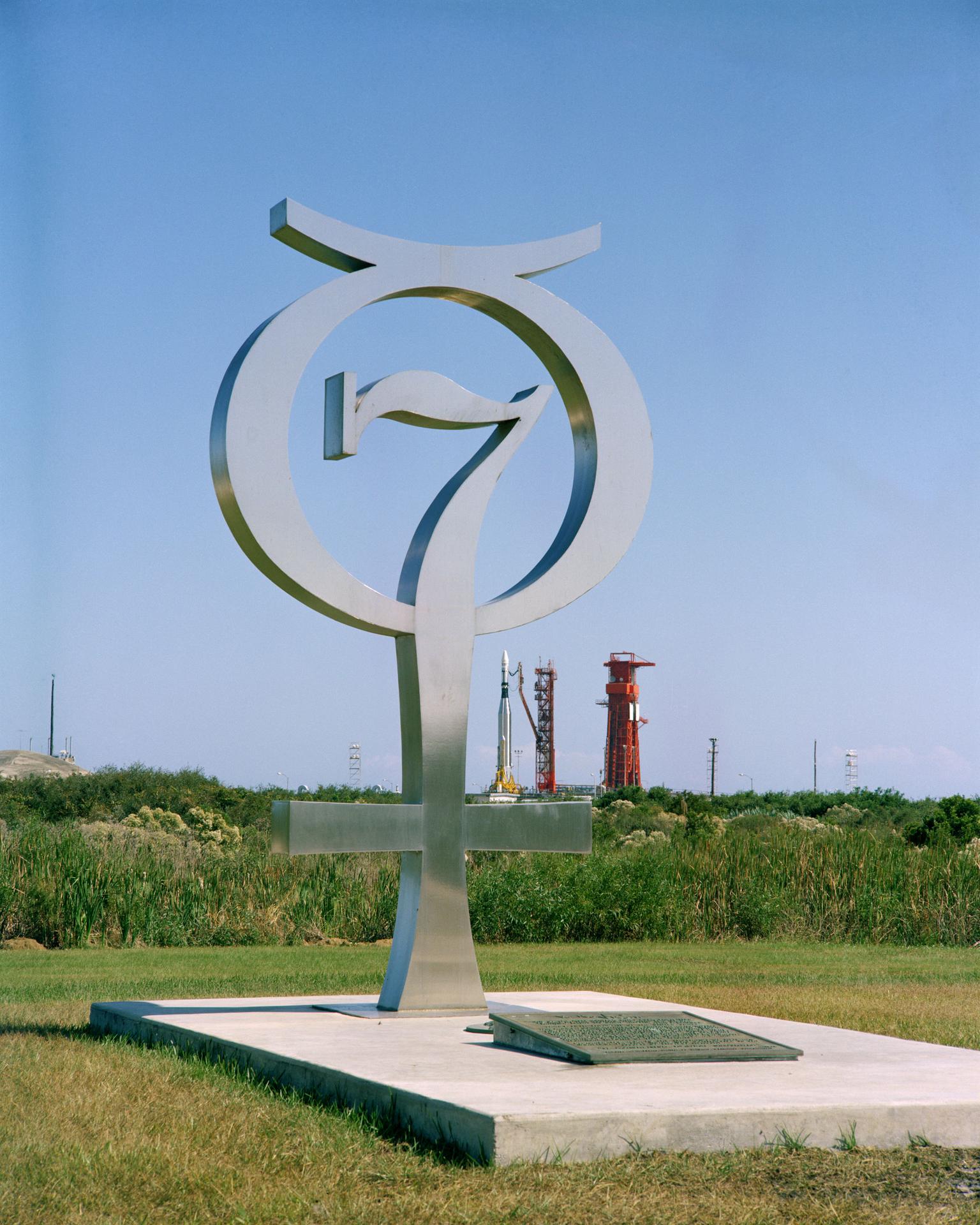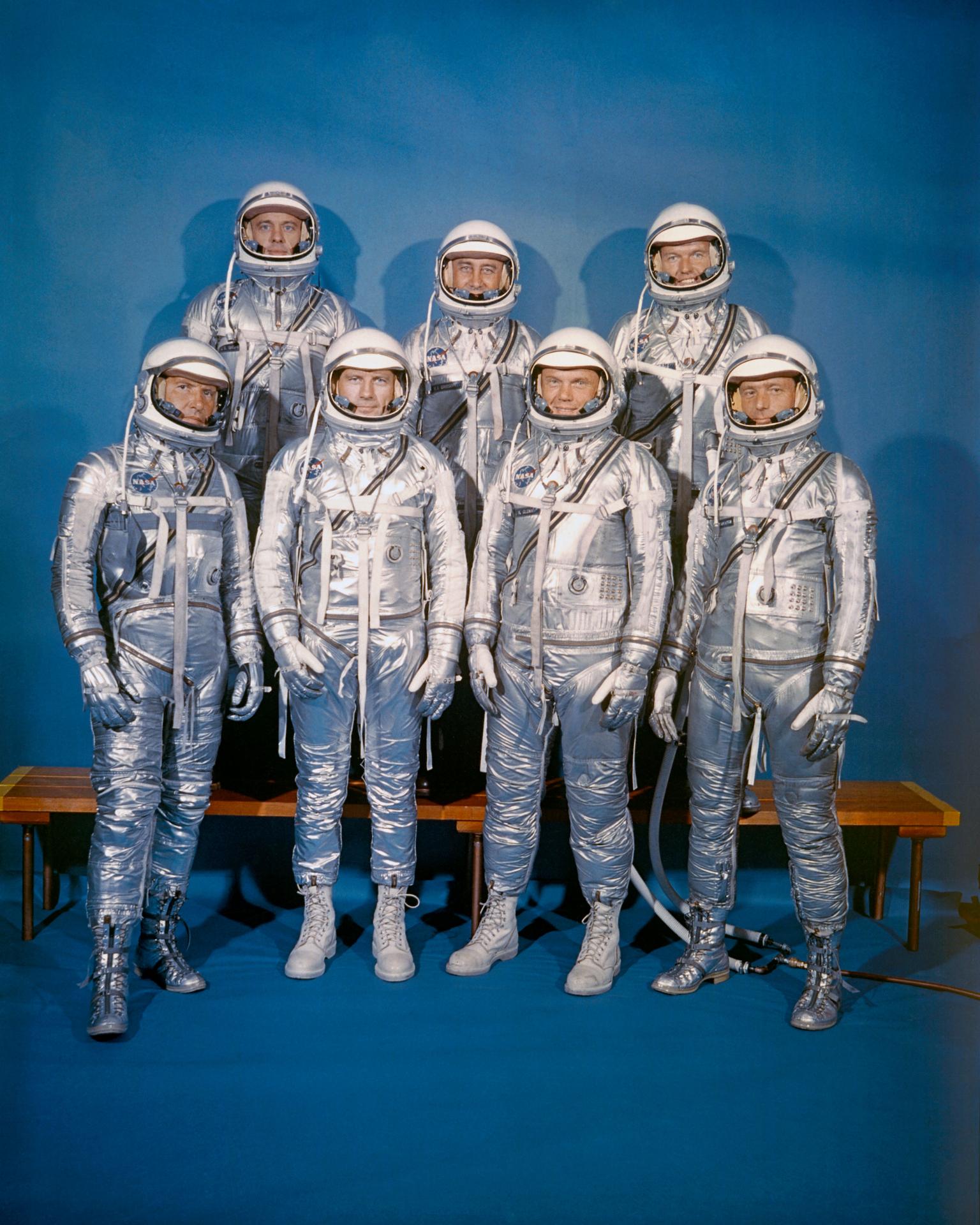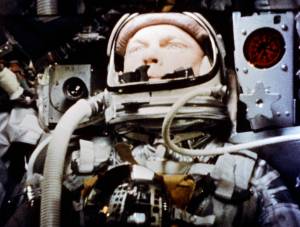- Introduction
- Objectives and Guidelines
- Astronaut Selection
- Summary
Now that men had been chosen to serve as the focal points for all this effort, new spirits animated the Space Task Group (STG). Indeed, the Nation as a whole began to participate vicariously in Project Mercury when, on April 9, 1959, at a press conference in Washington, Glennan (NASA Administrator) introduced to the public the seven men chosen to be this Nation’s nominees for the first human voyagers into space. They were to be called “astronauts,” as the pioneers of ballooning had been called “Argonauts,” for they were to sail into a new, uncharted ocean. These personable pilots were introduced in civilian dress; many people in their audience forgot that they were volunteer test subjects and military officers. Their public comments did not class them with any elite intelligence. Rather they were a contingent of mature Americans, average in build and visage, family men all, college-educated as engineers, possessing excellent health, and professionally committed to flying advanced aircraft.
Compared with the average, white, middle-class American male, they enjoyed better health, physically and psychologically, and they had far more experience among and above the clouds. Slightly short of average in stature, they were above average in seriousness of purpose. Otherwise these seven seemed almost random samples of average American manhood. Yet the names of Carpenter, Cooper, Glenn, Grissom, Schirra, Shepard, and Slayton were perhaps to become as familiar in American history as those of any actor, soldier, or athlete. Despite the wishes of NASA Headquarters, and particularly of Dryden, Silverstein, and Gilruth, the fame of the astronauts quickly grew beyond all proportion to their current activities and their preflight mission assignments. Perhaps it was inevitable that the “crew-pool” members of STG were destined for premature adulation, what with the enormous public curiosity about them, the risk they would take in space flight, and their exotic training activities. But the power of commercial competition for publicity and the pressure for political prestige in the space race also whetted an insatiable public appetite for this new kind of celebrity.
Walter T. Bonney, long a public information officer for NACA and now Glennan’s adviser on these matters, foresaw the public and press attention, asked for an enlarged staff, and laid the guidelines for public affairs policy in close accord with that of other Government agencies. The astronauts were first and foremost test pilots, men accustomed to flying along in the newest, most advanced, and most powerful vehicles this civilization had produced. They were talented specialists who loved to fly high-performance aircraft and who had survived the natural selection process in their profession. The demand for excellence in piloting skills, in physical health, and psychological adaptability becomes ever more stringent as one ascends the ladder toward the elite among military aviators, those senior test pilots with upwards of 1500 hours’ total flying time.
Eisenhower’s decision that the military services could provide the pilots greatly simplified the astronaut selection procedure. From a total of 508 service records screened in January 1959 by Stanley C. White, Robert B. Voas, and William S. Augerson at the military personnel bureaus in Washington, 110 men were found to meet the minimum standards specified earlier. This list of names included five Marines, 47 Navy men, and 58 Air Force pilots. Several Army pilots’ records had been screened earlier, but none was a graduate of a test pilot school. The selection process began while the possibility of manned Redstone flights in late 1959 still existed on paper. The evaluation committee at Headquarters, headed by the Assistant Director of STG, Charles J. Donlan, decided to divide the list of 110 arbitrarily into three groups and to issue invitations for the first group of 35 to come to Washington at the beginning of February for briefings and interviews. Donlan was pleased to learn from his staff, White, Voas, and Augerson, that 24 of the first group interviewed were happy with the prospects of participating in the Mercury program. Every one of the first 10 men interrogated on February 2 agreed to continue through the elimination process. The next week another group of possible pilot-candidates arrived in Washington. The high rate of volunteering made it unnecessary to extend the invitations to the third group. Justifying this action, George Low reported:
During the briefings and interviews it became apparent that the final number of pilots should be smaller than the twelve originally planned for. The high rate of interest in the project indicates that few, if any, of the men will drop out during the training program. It would, therefore, not be fair to the men to carry along some who would not be able to participate in the flight program. Consequently, a recommendation has been made to name only six finalists.
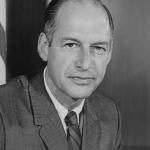
George Low
Chief of Manned Space Flight
Sixty-nine men had reported to Washington in two groups by the middle of February. Of these, six were found to have grown too tall. Fifty-six pilots took the initial battery of written tests, technical interviews, psychiatric interviews, and medical history reviews. Those who declined or were eliminated reduced the total at the beginning of March to 36 men. They were invited to undergo the extraordinary physical examinations planned for them at the Lovelace Clinic in Albuquerque. Thirty-two accepted and became candidates, knowing also that they were scheduled to pass through extreme mental and physical environmental tests at the Wright Air Development Center, in Dayton, Ohio, after being certified as physically qualified by the Lovelace Clinic. The 32 candidates were assured that the data derived from these special examinations in New Mexico and Ohio would not jeopardize their military careers, since none of the findings was to go into their service records.
Although the psycho physiological criteria for the selection of the best possible pilots for manned space flight had been under discussion for several years, the actual arrangement of the selection procedures for Mercury was directed by a NASA selection committee consisting of a senior management engineer, Donlan; a test pilot engineer, North; two flight surgeons, White and Augerson; two psychologists, Allen O. Gamble and Voas; and two psychiatrists, George E. Ruff and Edwin Z. Levy. These seven men had done the screening of records and the interviews and testing in Washington, constituting phases one and two of the selection program, before remanding their pool of 32 candidates to the medical examiners at the Lovelace Foundation.
Individually each candidate arrived at Albuquerque to undergo approximately a week of medical evaluations under each of five different schedules. In this third phase of the program, over 30 different laboratory tests collected chemical, encephalographic, and cardiographic data. X-ray examinations thoroughly mapped each man’s body. The ophthalmology section and the otolaryngology sections likewise learned almost everything about each candidate’s eyes, and his ears, nose, and throat. Special physiological examinations included bicycle ergometer tests, a total-body radiation count, total-body water determination, and the specific gravity of the whole body. Heart specialists made complete cardiological examinations, and other clinicians worked out more complete medical histories on these men than probably had ever before been attempted on human beings.
Nevertheless the selectees were so healthy that only one of the 32 was found to have a medical problem potentially serious enough to eliminate him from the subsequent tests at the Wright Aeromedical Laboratory. Phase four of the selection program was an amazingly elaborate set of environmental studies, physical endurance tests, anthropometric measurements, and psychiatric studies conducted at the Aeromedical Laboratory of the Wright Air Development Center. During March each of the 31 subjects spent another week experiencing a wide range of stressful conditions. Voas explained phases three and four: “While the purpose of the medical examinations at Lovelace Clinic had been to determine the general health status of the candidates, the purpose of the testing program at Wright Field was to determine the physical and psychological capability of the individual to respond effectively and appropriately to the various types of stresses associated with space missions.”
In addition to pressure suit tests, acceleration tests, vibration tests, heat tests, and loud noise tests, each candidate had to prove his physical endurance on treadmills, tilt tables, with his feet in ice water, and by blowing up balloons until exhausted. Continuous psychiatric interviews, the necessity of living with two psychologists throughout the week, and extensive self-examination through a battery of 13 psychological tests for personality and motivation, and another dozen different tests on intellectual functions and special aptitudes-these were all part of the week of truth at Dayton. Two of the more interesting personality and motivation studies seemed like parlor games at first, until it became evident how profound an exercise in Socratic introspection was implied by conscientious answers to the test questions “Who am I?” and “Whom would you assign to the mission if you could not go yourself?” In the first case, by requiring the subject to write down 20 definitional identifications of himself, ranked in order of significance, and interpreted projectively, the psychologists elicited information on identity and perception of social roles. In the peer ratings, each candidate was asked which of the other members of the group of five accompanying him through this phase of the program he liked best, which one he would like to accompany him on a two-man mission, and whom he would substitute for himself. Candidates who had proceeded this far in the selection process all agreed with one who complained, “Nothing is sacred any more.”
Back at STG headquarters at Langley, late in March 1959, phase five began. The final evaluation of data was made by correlating clinical and statistical information from New Mexico and Ohio. Eighteen of the 31 candidates came recommended without medical reservations for final consideration by Donlan and North. According to Donlan, although the physicians, psychiatrists, psychologists, and physiologists had done their best to establish gradations, the attrition rate was too low. So the final criteria for selecting the candidates reverted to the technical qualifications of the men and the technical requirements of the program, as judged by Donlan, North, White, and finally Gilruth. “We looked for real men and valuable experience,” said Donlan. The selection tests, as it turned out, were largely tests of tests, “conducted as much for the research value in trying to formulate the characteristics of astronauts as for determining any deficiencies of the group being examined.” The verbal responses at the interviews, before and after the psychophysiological testing, therefore, seem to have been as important final determinants as the candidates’ test scores.
Sitting in judgment over 18 finalists, Donlan, White, and North pared down the final pool of selectees, choosing each to complement the rest of the group. The going was so difficult that they could not reach the magic number six, so Gilruth decided to recommend seven. Donlan then telephoned each of the seven individually to ask whether he was still willing to accept a position as a Mercury astronaut. Each one gladly volunteered again. The 24 who were passed over were notified and asked to reapply for reconsideration in some future program. Gilruth’s endorsement of the final list was passed upward to Silverstein and Glennan for final review, and by mid-April the faces of America’s original seven spacemen were shown to the world.
As the astronauts lost their private lives, Project Mercury found its first great public notice. An eighth military officer and pilot came aboard STG about the same time to manage the public information and press relations that were already threatening to intrude on the time and talent of STG. The eighth personality was an experienced Air Force pilot who had flown extensively in World War II, on the Berlin Airlift, and in Korea, and who also had proven himself as a public information officer after 1954, when he was charged with ameliorating public fears and complaints over jet noises, sonic booms, and the ballistic missile programs. Lieutenant Colonel John A. Powers, USAF, came on board the STG staff in early April 1959. Thereafter the mellifluous voice and impish grin of “Shorty” Powers made his reputation as the primary buffer for STG in its relations with the press and the public. Throughout the Mercury program, he stood before the news media and the people of the world as the one living symbol of all the anonymous human effort behind the astronaut of the moment.
Powers propagated some oversimplified images in many instances, as it was his job to do, but no one man then or now could completely understand or communicate the complexity of the myriad research, development, and operations activities that lay behind a launch. Then, too, the caliber of the questions determined the quality of his answers, and all too often the questions asked were simple. What was an astronaut really like? What did he eat for breakfast? Which ones had been Boy Scouts? How did their wives take their commitment? Such questions provoked many to abandon asking how these seven came to be chosen and for what purpose they were entering training. From the United States Marine Corps, Lieutenant Colonel John Herschel Glenn, Jr., received orders to report to the Space Task Group at Langley Field, on the first of May. He then found himself the senior astropilot in age and date of rank. From the Navy, Walter Marty Schirra, Jr., and Alan Bartlett Shepard, Jr., both lieutenant commanders, and Lieutenant Malcolm Scott Carpenter reported aboard STG. And the Air Force assigned three captains, Donald Kent Slayton, Leroy Gordon Cooper, Jr., and Virgil I. Grissom, to duty with NASA as test pilots, alias Mercury astronauts. On May 28, 1959, the astronauts were brought before the House Committee on Science and Astronautics in executive session. They were asked to reassure the Congressmen that they were content with the orderliness, safety, and seriousness of Project Mercury. This they did vigorously, together and separately, before Schirra mentioned the “seven-sided coin” of competition over which one should get the first flight.
The first seven American astronauts were an admirable group of individuals chosen to sit at the apex of a pyramid of human effort. In training to transcend gravity they became a team of personalities as well as a crew of pilots. They were lionized by laymen and adored by youth as heroes before their courage was truly tested. In volunteering to entrust their lives to Mercury’s spirit and Atlas’ strength to blaze a trail for man into the empyrean, they chose to lead by following the opportunity that chance, circumstance, technology, and history had prepared for them. Influential 20th-century philosophers as diverse as Bertrand Russell, Teilhard de Chardin, and Walter Kaufmann tell us that man’s profoundest aspiration is to know himself and his universe and that life’s deepest passion is a desire to become godlike. All men must balance their hubris with their humility, but, as one of those aspiring astronauts said, “How could anyone turn down a chance to be a part of something like this?” Shortly after the astronauts were introduced to the public, a literate layman asked directions of Mercury for mankind in general: Which way will heaven be then? Up? Down? Across? Or far within?



























